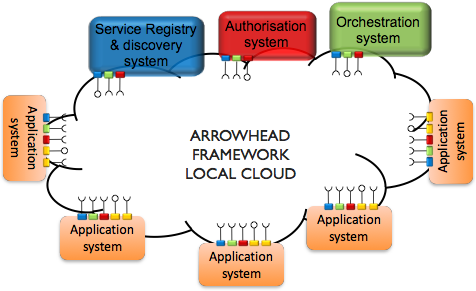Vision, objective and strategy
The Eclipse Arrowhead framework vision and objective
The vision is to enable collaborative automation and industrial IoT. The objectives of the Arrowhead Framework are to meet the following requirements:
- Integration to operational technology, OT
- Enabling interoperability between IoT and OT components.
- Building System of Systems, SoS, based on IT and OT components
- Engineering efficiency

The creation of SoS and IoT-based automation system of systems put emphasis on:
- Open standards
- High level of device, system and network security
- Ease of engineering
- Scalability
- Flexibility
- Real-time system properties
- Interoperability – protocol, physical layer
- Light weight – feasible for the edge
- Highly distributed
- Engineering efficiency
- ….
Strategy
The Arrowhead Framework has taken a microservice approach to address the vision and objectives.
- Services are the abstraction of communication: information exchange (i.e. open-source interface descriptions).
- Services are loosely coupled between service providers and service consumer.
- Late (runtime) binding

The concept of local clouds is introduced to enable higher security, hard real time, scalability and simplified engineering. A local cloud is characterised by having the following mandatory services:
- Capabilities for registering and discovering of services within the local cloud
- Authorisation and authentication and of service exchanges between service producers and consumers.
- Orchestration of service exchanges between producers and consumers, i.e. orchestration of System of Systems.

A set of Eclipse Arrowhead core systems provides further support to create, manage and operate complex SoS solutions.

